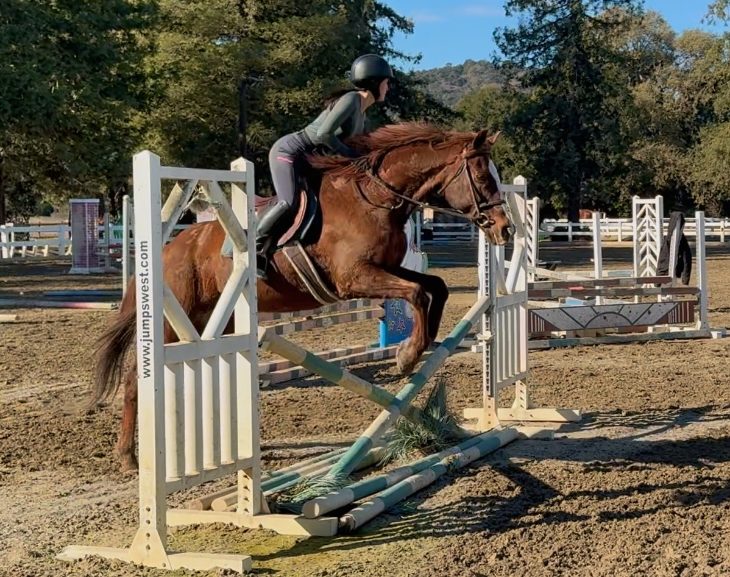With the bright sun in her eyes, junior Danica Chew grips the reins on her horse to guide it through a challenging three-foot jump.
Although she has perfected her maneuvers in training over the past few years, she competes with randomly drawn horses, many of which she initially meets minutes before her routine.
Chew participates in traditional equestrian competitions in an unconventional way: through the Interscholastic Equestrian Association, which lowers the cost of equestrian sports by providing athletes with horses.
“It an organization that is a bunch of different barns around the country,” Chew said. “They provide the horses and the saddle equipment for students, and they’re trying to make horseback riding more accessible. You don’t have to have your own horse to compete.”
Chew said the variability of IEA competitions and the horses she receives makes every competition both challenging and engaging.
“You rotate horses every week, so you get to be on a different horse every single time to improve your skills and learn how to ride different horses,” Chew said. “At shows, you randomly draw a horse’s name, and that’s the horse you have to compete on for that show. I haven’t gotten bored of it for the past five years.”
Chew also said equestrian competitions provide riders with man different disciplines to compete in.t.
“The main two categories are English and Western,” she said. “Western is the stuff you see in those rodeo movies. Then on the English side, it’s more of the jumping you see, and that’s the part I do.”
To combat the high cost of equestrian sports, senior Helena Bondolowski, who rides on a horse she owns, said her family looked for horse options outside of the United States to lower their costs.
“We actually imported one a little over a year ago now,” Bondolowski said. “We found that importing was much cheaper. The whole sport is very expensive, so I built out his record here to shape him to what I wanted him to be.”
However, Bondolowski said her connection with her horse is what makes her sport unique.
“You’re building a bond with an animal and building that trusting relationship,” Bondolowski said. “You’re working with other people on your team, but at the end of the day, it’s just about the relationship between you and your horse.”
Chew said adaptability, especially to a horse’s character, is also crucial to IEA competitions.
“Like humans, horses have all different kinds of personalities,” Chew said. “Their personalities also apply to when you’re riding them. Some horses like to go fast, and sometimes they can be hard to slow down. There are other horses who are super lazy and don’t want to go.”
Chew said, unfortunately, outsiders typically underestimate the skill and work necessary to compete in equestrian sports.
“A lot of people don’t see horseback riding as a sport,” Chew said. “While horseback riding may not be as physically demanding as basketball (or) soccer, it’s a different kind of skill. It requires a lot of patience. It requires a lot of strength. The horse does not know what it’s doing in five seconds. The rider is telling them every single thing that they have to do.”
And Chew said having a growth mindset to succeed in equestrian sports.
“Luck brings a lot of ups and downs in riding,” Chew said. “It’s OK to fall down. I’ve fallen down so many times, and just getting back up and doing your best is what’s important.“
Athletics Director Jennifer Crane said sports like horse riding give students the ability to pursue their interests in unconventional manners.
“It’s awesome when students follow their passion,” Crane said. “There’s so much pressure on students. I think it’s so valuable for students to have that outlet and that passion.


